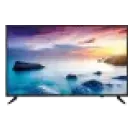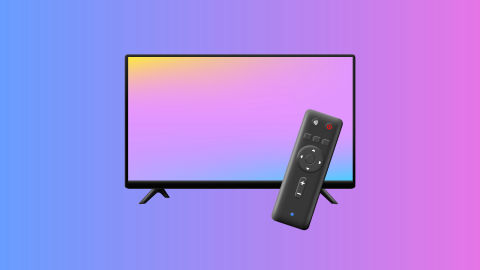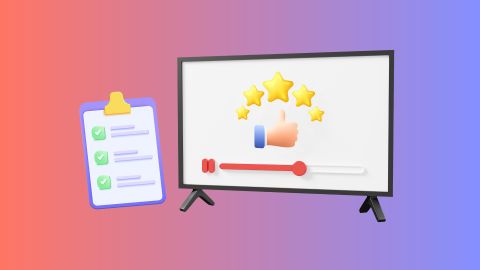Browse an extensive range of home entertainment options on Bajaj Mall. Browse through the specifications and find what suits you best. Once you have shortlisted your favourite model, head to any of Bajaj Finserv’s 1.5 lakh partner stores across 4,000 cities in India to discover a wide selection of room heaters. Choose the model that best fits your needs and take advantage of zero down payment offers, making your purchase more affordable by converting the cost into Easy EMIs.
3 min
13-Dec-2024
Active and passive 3D technologies offer unique ways to experience immersive visuals. Active 3D uses battery-powered shutter glasses to deliver sharper, high-definition images, making it ideal for those who prioritise detail and depth. Passive 3D, on the other hand, relies on lightweight polarised glasses, offering comfort and affordability for casual viewing.
Browse an extensive range of home entertainment options on Bajaj Mall. Browse through the specifications and find what suits you best. Once you have shortlisted your favourite model, head to any of Bajaj Finserv’s 1.5 lakh partner stores across 4,000 cities in India to discover a wide selection of room heaters. Choose the model that best fits your needs and take advantage of zero down payment offers, making your purchase more affordable by converting the cost into Easy EMIs.
Browse an extensive range of home entertainment options on Bajaj Mall. Browse through the specifications and find what suits you best. Once you have shortlisted your favourite model, head to any of Bajaj Finserv’s 1.5 lakh partner stores across 4,000 cities in India to discover a wide selection of room heaters. Choose the model that best fits your needs and take advantage of zero down payment offers, making your purchase more affordable by converting the cost into Easy EMIs.
Active 3D vs. Passive 3D: Overview
When it comes to modern home entertainment, the choice between active 3D and passive 3D technology can significantly impact your viewing experience. These technologies differ in how they present 3D images on a screen, with active 3D offering high-definition clarity using battery-powered glasses, while passive 3D uses polarised glasses for a simpler experience. Choosing the right TV for your home entertainment needs depends on factors like resolution, cost, and convenience.
Active 3D
Choosing between active and passive 3D depends on your priorities—be it top-notch resolution, affordability, or comfort. Active 3D suits tech enthusiasts seeking premium visuals, while passive 3D is perfect for casual viewers. With advancements in modern Android TVs and the availability of cutting-edge options like smart TVs, finding a model that complements your choice of 3D technology is easier than ever. Prioritise your preferences to elevate your home entertainment experience.
Once you have made your decision, visit the nearest Bajaj Finserv partner store and explore the wide range of options available. Select the TV that suits your preferences and convert its cost into Easy EMIs. You can choose to repay it in a convenient tenure of up to 60 months. This financing solution from Bajaj Finserv is available on 1 million products.
Understanding the differences between active and passive 3D technology
The debate between active and passive 3D revolves around how each technology creates immersive visuals. Active 3D utilises shutter glasses to deliver unmatched detail, ideal for enthusiasts who own a 4K LED TV. On the other hand, passive 3D is perfect for casual viewing, providing a lightweight and cost-effective solution. Whether you are considering an upgrade or exploring options like a 50 inch smart TV, understanding these distinctions can help you choose the ideal setup for your space.Pros and cons: Active 3D vs. passive 3D for home entertainment
Both active and passive 3D technologies have unique advantages and limitations:Active 3D
- Pros: Offers superior image quality, high-resolution support, and better depth perception.
- Cons: Expensive glasses that require charging, higher initial costs, and reduced brightness during viewing.
- Pros: Affordable glasses, more comfortable for extended use, and have a brighter display.
- Cons: Lower resolution, especially on larger screens, and limited compatibility with some formats.
Which 3D technology offers a better viewing experience? Active or passive?
Deciding on the better 3D technology boils down to personal preference and usage needs. Active 3D excels in delivering lifelike visuals with unmatched clarity, making it a preferred choice for high-end setups. However, its need for battery-powered glasses and higher costs can be a deterrent. Passive 3D, on the other hand, is ideal for family movie nights due to its affordable glasses and ease of use. For those upgrading to modern Android TVs, consider models that integrate well with either 3D technology, ensuring compatibility and enhanced performance.Choosing between active and passive 3D depends on your priorities—be it top-notch resolution, affordability, or comfort. Active 3D suits tech enthusiasts seeking premium visuals, while passive 3D is perfect for casual viewers. With advancements in modern Android TVs and the availability of cutting-edge options like smart TVs, finding a model that complements your choice of 3D technology is easier than ever. Prioritise your preferences to elevate your home entertainment experience.
Once you have made your decision, visit the nearest Bajaj Finserv partner store and explore the wide range of options available. Select the TV that suits your preferences and convert its cost into Easy EMIs. You can choose to repay it in a convenient tenure of up to 60 months. This financing solution from Bajaj Finserv is available on 1 million products.
Explore TVs on EMI with Bajaj Finserv
Upgrade your home entertainment experience by exploring a variety of options on Bajaj Mall. Once you have chosen your preferred model, visit a Bajaj Finserv partner store to make your purchase. With flexible EMI plans, you can enjoy your favourite products without straining your budget. Bajaj Finserv also provides financing solutions for electronics, ensuring affordability and convenience.
Benefits of shopping for home entertainment using Bajaj Finserv’s financing options
- Cost-effective pricing: Access competitive prices on home entertainment products at Bajaj Finserv partner stores, making your investment budget-friendly.
- Easy EMIs: Spread the cost of your purchase into affordable instalments with flexible repayment options from Bajaj Finserv.
- Zero down payment: Select home entertainment products are available with no upfront cost, letting you pay in easy instalments.
- Extensive variety: Browse a wide selection of home entertainment devices across Bajaj Finserv partner stores to find the perfect match.
- Exclusive deals and cashback: Avail of special offers and cashback when you shop for home entertainment on EMI.
- Free home delivery: Enjoy complimentary delivery on select home entertainment products, enhancing your shopping convenience.
Televisions
TVs by size
TVs by budget
TV comparisons
Bajaj Finserv App for all your financial needs and goals
Trusted by 50 million+ customers in India, Bajaj Finserv App is a one-stop solution for all your financial needs and goals.
You can use the Bajaj Finserv App to:
Apply for loans online, such as Instant Personal Loan, Home Loan, Business Loan, Gold Loan, and more.
You can use the Bajaj Finserv App to:
Apply for loans online, such as Instant Personal Loan, Home Loan, Business Loan, Gold Loan, and more.
- Explore and apply for co-branded credit cards online.
- Invest in fixed deposits and mutual funds on the app.
- Choose from multiple insurance for your health, motor and even pocket insurance, from various insurance providers.
- Pay and manage your bills and recharges using the BBPS platform. Use Bajaj Pay and Bajaj Wallet for quick and simple money transfers and transactions.
- Apply for Insta EMI Card and get a pre-approved limit on the app. Explore over 1 million products on the app that can be purchased from a partner store on Easy EMIs.
- Shop from over 100+ brand partners that offer a diverse range of products and services.
- Use specialised tools like EMI calculators, SIP Calculators
- Check your credit score, download loan statements, and even get quick customer support—all on the app.
Frequently asked questions
Do I need active or passive 3D glasses?
The choice between active and passive 3D glasses depends on your viewing preferences and budget. Active glasses provide sharper and more detailed visuals, ideal for high-resolution TVs, while passive glasses offer affordability and comfort for casual viewing.
What is a passive 3D TV?
Passive 3D technology uses lightweight, polarised glasses to display 3D images by splitting the picture into separate perspectives for each eye. It offers an affordable and comfortable way to enjoy 3D content, though the resolution may be lower compared to active 3D.
What is an active 3D TV?
An active 3D TV utilises advanced technology that synchronises with battery-powered shutter glasses to deliver high-definition 3D visuals. This system ensures immersive and detailed images, making it a preferred choice for cinephiles and tech enthusiasts.
Do I need active or passive 3D glasses?
The choice between active and passive 3D glasses depends on your viewing preferences and budget. Active glasses provide sharper and more detailed visuals, ideal for high-resolution TVs, while passive glasses offer affordability and comfort for casual viewing.
Show More
Show Less











